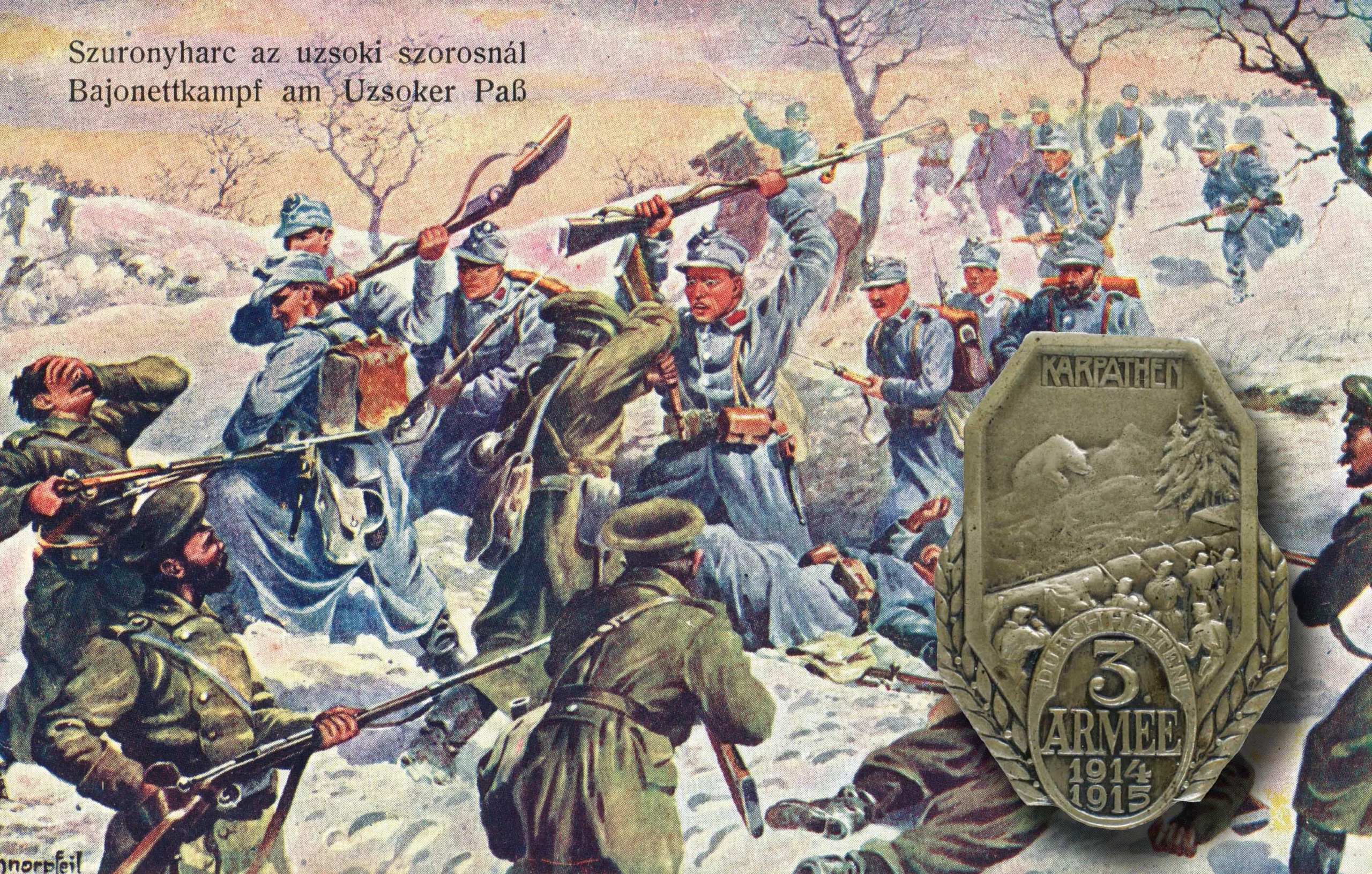January, 1915
By the end of 1914, the Austro-Hungarian empire’s troops were in a critical situation on the northeastern front. Attacks and counter-attacks in the course of the winter caused huge losses, the replacement of which proved increasingly difficult. In addition, the enemy penetrated deep into the territory of the country, occupied Eastern Galicia and Bukovina, invaded Hungarian territories through the Carpathians’ passes in several places. And in the West, he advanced almost to Krakow. The defense on this line has been stiffened by the deployment of the last reserves.
At the head of such a newly assembled battle group came Lieutenant General Sándor Szurmay to the frontline. He was previously appointed Secretary of State for Defence in October. Szurmay asked for the front, for the defense of the country. He played important role in the defense of the passes in the Carpathians, especially in the Uzsok Strait. At the lead of the corps entrusted to him, he took the lion’s share in the interception of the Russian steamroller in December 1914. He took command of the 38th Army Division on November 23. Later his troops were expanded to the size of an army corps mainly by insurgent troops.

After the liberation of the Uzsok Pass, the corps was deployed to the Bártfa area in December. In a few days time he advanced to Neu Sandez in the Beskids. This contributed significantly to the weakening of the Russian attack on Kraków. In January 1915, the Szurmay Corps was sent back to the Uzsok Strait. From there, he had to take part in the attack to exonerate Przemysl.
Lieutenant General Szurmay’s group has had a very difficult task in this attack. The Russians have already penetrated deep into the Ung Valley. Their first lines stretched through the 1,035-metre-high Studnica and ended on the 1,135-metre-high Ceremcha wooded mountainous terrain. But the Russians also controlled the high ground that dominated the pass. These strong positions could only be occupied if attacked from the side or back. However, the movements in the mountains could only be made through the ridge line, as the deeper valleys, notches and ravines were covered by 5-6 meters thick snow swept by storms. But it wasn’t easy to get ahead on the ridges either. Here, too, the snow cover was 1-2 meters thick. Despite all these difficulties, the Szurmay Group forced the surrender of the enemy’s front line as early as January 23. On the same day, the 7th Division occupied the Studnica peak, and the Russians retreated to a more favorable position. On the evening of the 26th, the Szurmay Group took possession of the Uzsok Pass after enormous effort and deprivation.

Later the momentum of the 3rd army’s attack to liberate Przemysl was broken and the Russians launched a counterattack. Przemysl’s fortress has not been liberated now or in any further attempts to do so until March. However, the Russian advance on the Carpathian line was also stuck, and their troops failed to make it to the Hungarian Plains.

The first badge shown in the post commemorates the 3rd Army’s battles in the Carpathians. It has very plastic depiction: soldiers standing in the trenches await the enemy’s attack. The opponent is depicted as the Russian bear on this badge. The other badge is a portrait of Corps Commander Sándor Szurmay. This is the Kappenabzeichen of the relief fund founded by the general. The inscription on the badge refers specifically to the losses suffered in the Uzsok Pass.




